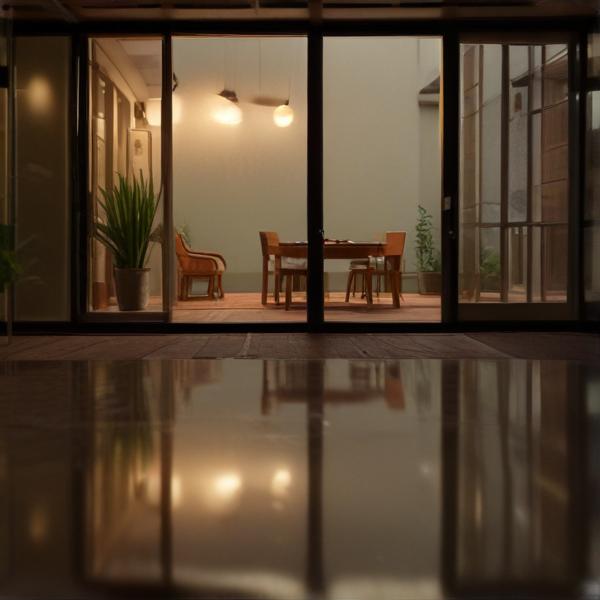基本信息 (Basic Information)
含义与用法 (Meanings & Usage)
中文核心释义 (Core Chinese Meaning): 平而坚硬的片状物,通常指木板。
英文核心释义 (Core English Meaning): board, plank; a flat and hard piece, usually made of wood.
象形意义 / 为何这么写 (Pictographic Meaning / Writing Rationale)
文言文释义 (Classical Chinese Meaning)
古汉语中与现代“板”的意义基本相同,指扁平坚硬的木片或物体。Similar to modern meaning; refers to flat and hard wooden pieces or objects.
深入学习 (In-depth Study)
字源故事 (Origin Story)
字形演变 (Character Evolution)
常用词语和例句 (Common Words & Examples)
地板 (floorboard)
小猫在地板上玩耍。
Eng: The kitten is playing on the floorboard.
黑板 (blackboard, chalkboard)
老师在黑板上写字。
Eng: The teacher is writing on the blackboard.
模板 (template, mold board)
请按照模板填写内容。
Eng: Please fill in the content according to the template.
相关成语 (Related Idioms)
相关成语信息待补充。Related idiom information pending.
多语言翻译 (核心释义) (Translations (Core Meaning))
- French: planche, plaque
- German: Brett, Platte
- Spanish: tabla, plancha
- Italian: tavola, lastra
- Portuguese: tábua, placa
- Russian: доска, панель
- Arabic: لوح، صفيحة
- Persian: تخته، صفحه
- Dutch: plank, plaat
- Polish: deska, płyta
- Vietnamese: tấm ván, bảng
- Ukrainian: дошка, панель
视频学习资源 (Video Learning Resources)
通过以下链接在热门视频网站搜索 "板" 的更多讲解:
Search for more explanations of "板" on popular video sites:
- 在 Bilibili.com 搜索 "板 字源 说文解字" (Search on Bilibili)
- 在 YouTube.com 搜索 "板 character origin etymology" (Search on YouTube)
网络参考 (Web References for "板") ()
网络内容摘要 (Web Content Summary):
板(拼音:bǎn)是一个常用汉字,部首为“木”,常见于日常生活和常用词汇中。板 (pinyin: bǎn) is a commonly used Chinese character with the “wood” radical, frequently seen in daily life and common words.
-
核心含义与起源: “板”最早起源于春秋战国时期,最初的含义是指片状的木头,后来泛指一切片状的材料或物品。 Core meaning & origin: “板” first appeared in the Warring States period. It originally meant “a flat piece of wood,” and later generally referred to any flat piece or board-like object.
-
构字说明: “板”由“木”(表示与树木、木材有关)和“反”(作声符,表音用)组成。 Character construction: Composed of the “wood” radical (indicating relation to wood or trees) and the phonetic component “fan,” which gives the pronunciation.
-
文化与引申义: “板”后来也引申为对商家的敬称(尤其在繁体字“闆”中常见,如“老板”)。 Cultural & extended meanings: “板” later also became a respectful address for shop owners (notably in the traditional form “闆”, as in “老板” meaning “boss”).
-
常用词与易混淆点: 常见词汇如“黑板”(blackboard)、“板子”(board),也常见于姓氏和商号中。需注意与“版”(printing plate; edition)区分,二者写法和词义不同。 Common words & confusion points: Common words include “黑板” (blackboard) and “板子” (wooden board). It is also used in surnames and shop names. Be careful not to confuse “板” with “版” (printing plate; edition), which has a different meaning and writing.
板(汉语文字)_百度百科
板(读作bǎn ),汉语一级字,部首为木。是由两个不同字义的汉字合并而来——"板"和"闆"。"板"最早见于春秋战国文字,由"版"分化而来,本义指片状的木头。后凡施于宫室器用的片状物皆可称板。后又引申指对商家敬称。而繁体字"闆"本义指门中看,后引申指对商家敬称。
板字形演变字源_汉字「板」_板的甲骨文_板的金文_金文编_甲骨文编
此字始見於戰國文字。戰國文字、隸書及楷書之構形,均為從木、反聲。「木」為樹,作為形符,表示義與樹木有關;「反」為覆手翻轉,於此僅作不示義的聲符,表示音讀。
更多图片 (板 More Images) ()
